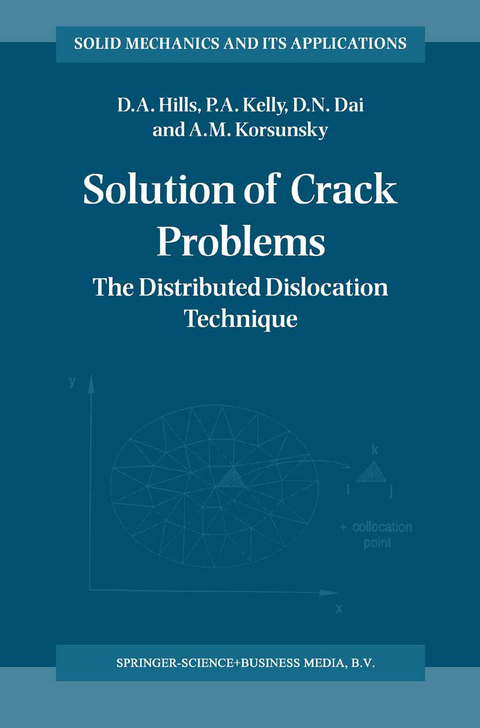
Solution of Crack Problems
Springer (Verlag)
978-0-7923-3848-2 (ISBN)
1 Introduction to Fracture Mechanics.- 2 Distributed Dislocation Fundamentals.- 3 Further Topics in Plane Crack Problems.- 4 Interface Cracks.- 5 Solution of Axi-Symmetric Crack Problems.- 6 Three-Dimensional Cracks: An Introduction.- 7 Three-Dimensional Cracks: Further Concepts.- 8 Concluding Remarks.- A Dislocation Influence Functions.- A.1 Notation.- A.2 A Dislocation Outside a Circular Inclusion.- A.2.1 A Dislocation Near a Circular Hole.- A.3 A Dislocation Near a Straight Interface.- A.3.1 A Dislocation in a Half-Plane.- A.4 The Interfacial Dislocation.- A.4.1 Interfacial Stresses.- A.5 A Dislocation on the Boundary of a Circular Inclusion.- A.6 Displacements Due to a Dislocation.- A. 7 Transformation Rules for the Dislocation.- A.8 Dundurs’ Parameters.- B Numerical Solution of SIEs with Cauchy Kernel.- B.l The Standard Gaussian Quadrature Formulae.- B.2 Gaussian Quadrature for SIEs with Cauchy Kernel.- B.3 SIEs Arising in Surface-Breaking Crack Problems.- B.3.1 The Method of Boiko and Karpenko.- B.3.2 Expansion Method.- B.3.3 Series Expansion.- B.4 Numerical Quadrature: Generalised Cauchy Kernel.- C Plane and Ring Dipole Influence Functions.- C.1 Plane Influence Functions.- C.2 Plane Dipole Transformation Rules.- C.3.1 Asymptotic Behaviour of the Integrals.- C.3.2 Numerical Considerations.- C.4 Finite Part Integrals.- D Contour Integral and Kernel Function.- D.1 Closed-Form of Certain Contour Integrals.- References.
| Erscheint lt. Verlag | 29.2.1996 |
|---|---|
| Reihe/Serie | Solid Mechanics and Its Applications ; 44 |
| Zusatzinfo | XII, 308 p. |
| Verlagsort | Dordrecht |
| Sprache | englisch |
| Maße | 156 x 234 mm |
| Themenwelt | Mathematik / Informatik ► Mathematik ► Analysis |
| Mathematik / Informatik ► Mathematik ► Angewandte Mathematik | |
| Naturwissenschaften ► Physik / Astronomie ► Mechanik | |
| Technik ► Maschinenbau | |
| ISBN-10 | 0-7923-3848-0 / 0792338480 |
| ISBN-13 | 978-0-7923-3848-2 / 9780792338482 |
| Zustand | Neuware |
| Haben Sie eine Frage zum Produkt? |
aus dem Bereich


